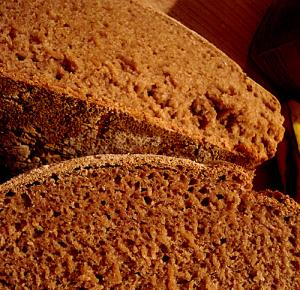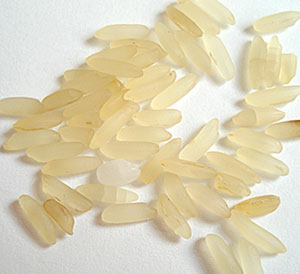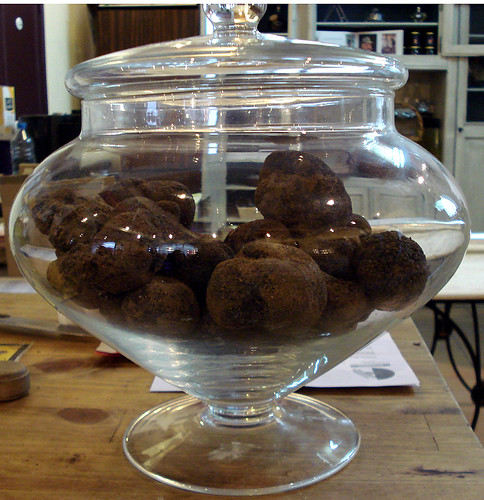 Yakitate!! Japan is a popular manga series. So popular in fact that it's one of the few manga that's available (legitimately) in English. There was also an anime series, which so far is only (legally) available in Japan. It sort of belongs to a genre of manga called Gourmet (gurume) Manga, manga whose main theme is food-related. The Wikipedia Japan page for Gourmet Manga lists more than 100 titles in this genre, though as far as I know only Yakitate!! is available in English at the moment. (I'll be talking about other gourmet manga eventually.)
Yakitate!! Japan is a popular manga series. So popular in fact that it's one of the few manga that's available (legitimately) in English. There was also an anime series, which so far is only (legally) available in Japan. It sort of belongs to a genre of manga called Gourmet (gurume) Manga, manga whose main theme is food-related. The Wikipedia Japan page for Gourmet Manga lists more than 100 titles in this genre, though as far as I know only Yakitate!! is available in English at the moment. (I'll be talking about other gourmet manga eventually.)
The Yakitate part of the title means "freshly baked". The Japan part is a pun of sorts: pan is the Japanese word for bread (the word was imported from Portuguese most likely), and the goal of the main character is to find the ultimate JaPan, or Japanese bread. The title sequence of the anime says that "There's furansu pan (French bread), igirisu pan (English bread), doitsu pan (German bread) but no bread to represent Japan". The story unfolds in the form of several big Iron Chef style baking competitions, where the main character Kazuma Azuma and others vie with each other for fame and glory. A running gag is that the bread creations are so delicious that they make the eaters, especially main judge Kuroyanagi, have extreme reactions like dying and going to heaven, or (from another judge) sprouting a live peacock out of his head.
Filed under:
books and media bread japanese manga
Recently reader Joanna emailed asking why her home made tofu was, while creamy, not turning into an actual block of tofu. This happens to me sometimes too. The non-coagulated creamy tofu (which looks rather like fresh ricotta) can still be used in ganmodoki and other recipes that call for mashed up tofu, so it doesn't have to go to waste. Still, it is disappointing when, after all the trouble you've gone to to make tofu, your carefully formed block disintegrates instead of holding firm.
Filed under:
japanese tofu
A lot of Japanese dishes are quite subtly flavored to start with, and are eaten dipped in a simple soy sauce based dipping sauce. You're probably familiar already with the wasabi + soy sauce combination used for most kinds of sashimi and sushi, but there are a few others. Which sauce goes with which dish really seems to depend as much on tradition as anything, though certain combinations just fit better than others. The ratio of flavoring to soy sauce is a matter of personal taste in most cases.
Whenever using a dipping sauce, try not to dunk whatever you are eating into it. The common sushi eating mistake made is to dunk the rice side into soy sauce - this not only makes the rice grains go all over the place, often down your front, but absorbs way too much soy sauce. Turn the sushi over and dip the fish just a bit instead. (I tend to think that this rice-dunking is why a lot of the finer sushi restaurants nowadays serve their sushi pre-seasoned, needing no dipping.)
Here are the most commonly used dipping sauce combinations:
Filed under:
basics japanese ingredients
 Like probably everyone, or at least every food blogger, in the world with an oven and a fondness for baking bread, I tried the No Knead Bread as written up in the New York Times in November. Authored by Mark Bittman via Jim Lahey of Sullivan Street Bakery in New York, this almost perplexingly easy method of mixing up a bread dough that has that distinctive 'artisanal bread' crumb and thin, crackly crust caused a sensation in the teapot that is the world of food blogging.
Like probably everyone, or at least every food blogger, in the world with an oven and a fondness for baking bread, I tried the No Knead Bread as written up in the New York Times in November. Authored by Mark Bittman via Jim Lahey of Sullivan Street Bakery in New York, this almost perplexingly easy method of mixing up a bread dough that has that distinctive 'artisanal bread' crumb and thin, crackly crust caused a sensation in the teapot that is the world of food blogging.
As just about everyone says, it does produce a very good bread. And yet...for me it lacked that something extra special. This has a lot to do with the fact that in this country good bread is quite easy to get. Even the bread sold at the major supermarkets is not bad at all. The rather shiny, slightly gummy, open-grained texture of the No Knead Bread reminded me of pain paillase, a very popular twisted loaf bread that's widely sold in Swiss bakeries. The thing is though, pain paillase, being a sourdough bread and baked into a fat baguette shape, is tastier than the all-white flour No Knead Bread. So, I haven't baked any basic No Knead since the first couple of loaves. Besides. I'm trying to cut out white flour at the moment.
Filed under:
bread baking desem whole wheat
In a comment to my Onigiri Revisited post, Jennifer said:
I’ve made fresh onigiri a number of times and would love to be able to make it the night before and take into work with me the next day. How do I do that? (or am I out of luck?) The rice gets all hard and I’ve tried sprinkling water on it in the microwave, but then it falls apart. Suggestions? Do I need a special type of rice? How do I store it after it is made?
Onigiri really are better if made the morning of the day you're going to eat them. I remember my mom waking up very early in the morning to make onigiri when we had a school outing (which usually meant an obento lunch with onigiri).
That being said, you can make them the night before, but you need to take some measures. There are a few things you can do to have moist (but not wet) rice balls.
Filed under:
japanese rice onigiri how-to
Submitted by maki on 11 January, 2007 - 14:41

(I've updated this very popular post with some info about germ rice (haiga-mai) and sprouted brown rice (hatsuga genmai). In case you missed it the first time around, here it is again in your RSS reader and on the front page.)
Rice is a big part of my food life. While I do like other kinds of carbohydrates, especially good bread and pasta, rice is definitely my favorite. I usually have on hand several different kinds of rice, each with a different use. Here are the ones I have in the pantry right now that I use in everyday cooking.
Type:
feature Filed under:
japanese ingredients rice
 The theme of the fourth round of Food Destinations, hosted by Paula of Mango and Lime, is My Favorite Gourmet Gift Shopping Spot.
The theme of the fourth round of Food Destinations, hosted by Paula of Mango and Lime, is My Favorite Gourmet Gift Shopping Spot.
Filed under:
food destinations food events swiss shopping zurich
I love Christmas celebrations, and Thanksgiving when I'm in the U.S., but the holiday that has the most memories for me is New Years. This is the biggest holiday celebrated in Japan.
Filed under:
japanese winter memories new year

A few days after visiting the truffle market in Richerenches, we were staying in the medieval town of Uzès in the Gard. While the Gard is technically part of the Languedoc region, it feels very much like Provence.
Filed under:
food travel ingredients mushrooms winter france
Submitted by maki on 8 December, 2006 - 13:29
Since I posted my article about essential and not-so essential Japanese ingredients, a number of people have asked about the equipment I use for preparing Japanese food. It's taken me a while to get to it, but here it is finally. (You can consider this as a kind of gift guide for anyone who's into Japanese cooking too..'tis the season and all that after all!)
Type:
feature Filed under:
basics equipment japanese
Pages